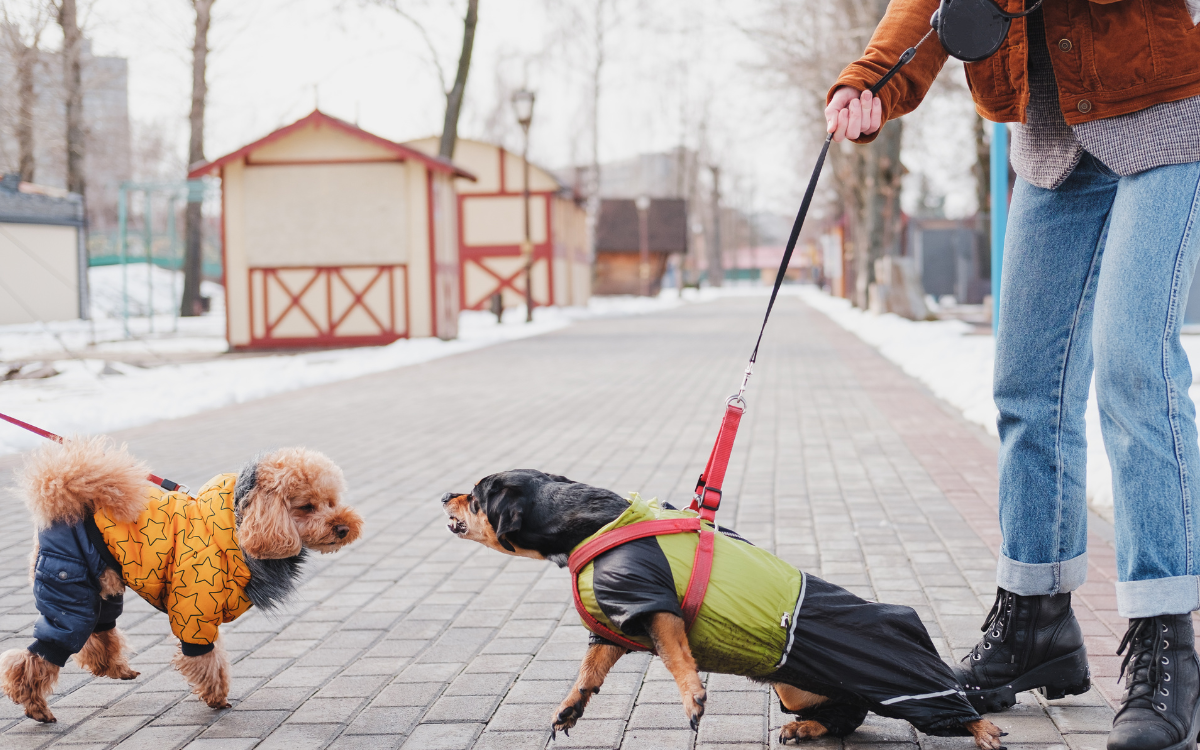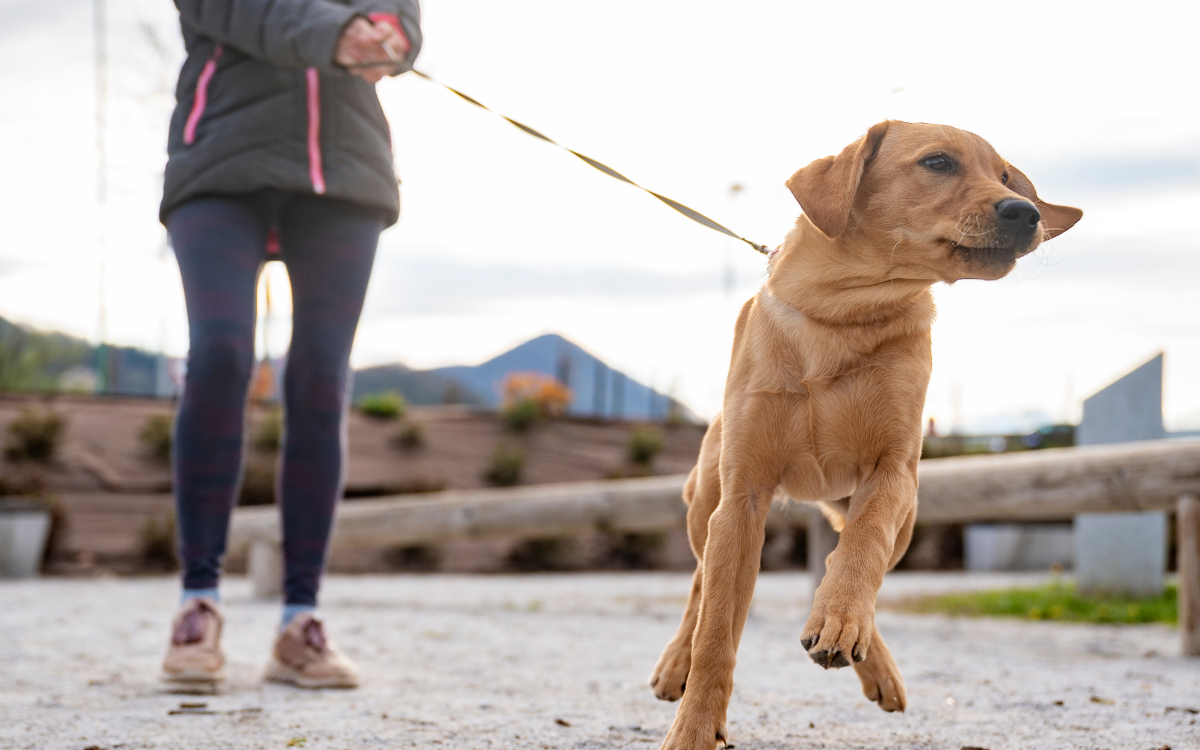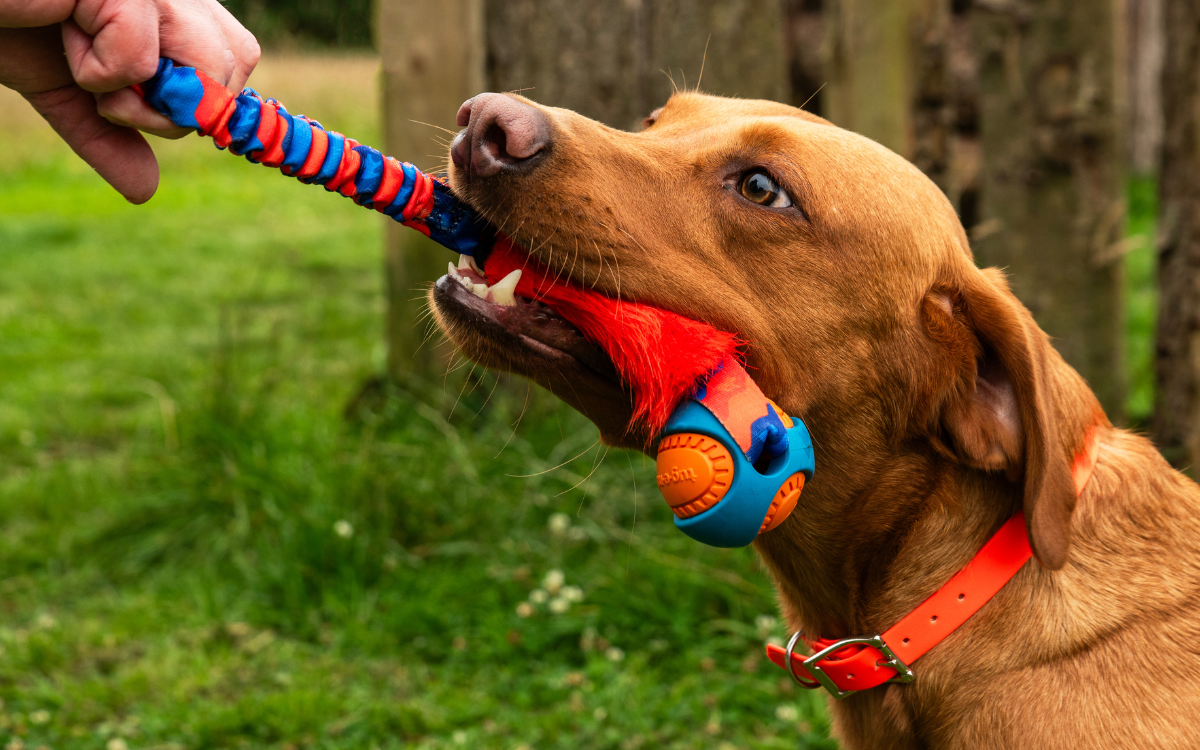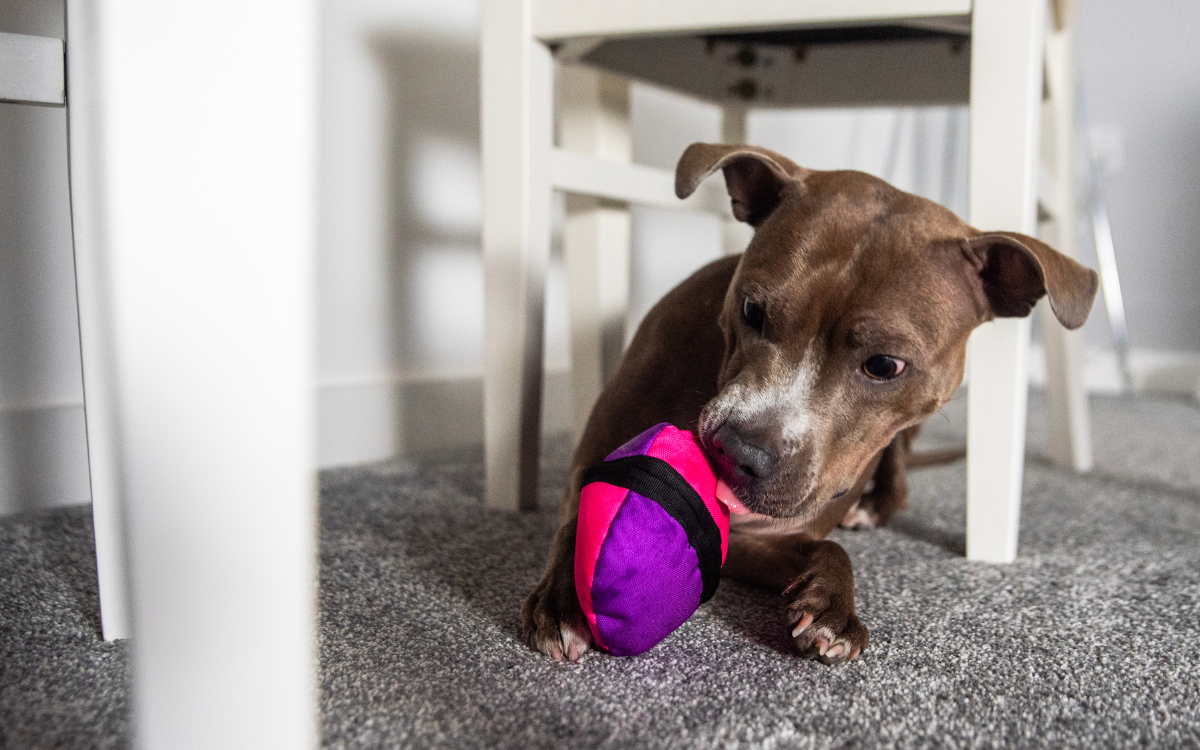Reactive Dogs - What the experts want you to know
72% of dogs show signs of reactivity. It’s the most commonly reported problem behaviour - and the number one reason that dogs are surrendered to rescue or sadly even euthanised.
Having a dog who barks, lunges, growls or has over the top reactions can feel embarrassing, scary and confusing. It’s not always predictable and people who don’t understand can be very judgemental - which only adds to the stress a reactive dog owner experiences.
 We caught up with Julia Hawkins and Barbara Paterson, two incredible dog trainers who’ve hosted a truly tremendous free virtual festival for reactive dogs.
We caught up with Julia Hawkins and Barbara Paterson, two incredible dog trainers who’ve hosted a truly tremendous free virtual festival for reactive dogs.
It’s packed with expert insights from some of the world’s best dog trainers, behaviourists and professionals - and we’re going to share some of the highlights with you.
Buckle in and prepare to see reactive dogs through a new lens in this ultimate guide to living happily with a reactive dog.
The ultimate guide to living happily with a reactive dog
There’s been a big shift happening in the dog training world for years, and The International Reactive Dog Festival makes what the experts know accessible to owners - so you can benefit from a whopping 30 world renowned dog professional’s experience and tips.
Contrary to what traditional and outdated training methods suggest, you don’t have to dominate or suppress your dog’s emotions or behaviour in order to ‘fix’ reactivity.
In fact, what this incredible line up of expert dog trainers and professionals share is focused on understanding your dog’s experience so you can make their lives happier and free from the stresses that often cause reactive outbursts.
In turn, you will feel happier, more relaxed, and confident that you haven’t caused your dog’s reactivity - but you can help them with it in ways you may have never imagined.
What is a reactive dog?
Julia explains that we use the term ‘reactive dog’ to describe what is perceived to be an overreaction to something. That could be barking, lunging, baring teeth, or growling - often we use it to describe a dog who struggles to disengage when reacting to stimuli.

However, Julia and many of the expert dog trainers who shared their experiences of reactive dogs - don’t really like the term or the label.
They use it, because it’s what people understand - but Julia says ‘it’s just an umbrella term really. It covers a lot of different behaviours in a lot of different contexts where the dog is struggling to deal with a situation and displays a disproportionate response to it.”
Expert in aggressive dogs Michael Shikashio said, “From a behaviour standpoint, all dogs are reactive. All dogs are reacting to stimuli in their environment, whether that’s just looking at something or lunging and barking on the end of the leash”.
Why do dogs become reactive?
Julia says there are lots of reasons that dogs can become reactive. “It can be because of genetics, epigenetics, pain, trauma, learned experience - all of these things can contribute to reactivity.
“The genetic part and the epigenetics is something that people need to hear because otherwise you end up blaming yourself or feeling you’ve done something wrong.
“Actually, if your dog’s parents had behavioural issues or were fearful, that has a big impact. I wish everyone would watch ethical dog breeder and animal advocate Rebecca Walters webinar from the reactive dog festival. She shares such vital insights on genetics and selecting a puppy that is so valuable for people to know.”
Most importantly, Julia says “If your dog is reactive, stop blaming yourself! Focus instead on understanding your dog and learning about how you can support them.”
How do you fix a reactive dog?
Barbara says “True change happens when you learn to understand your dog and focus on your relationship. We can support a dog to feel safe, to have freedom to do things they love and to grow in confidence - and for some dogs (and their people!) that will result in a different state of mind.”
“Our reactive dog festival looks at reactivity from so many different angles and shares the best training strategies to help you build confidence, support your dog, and learn how to help them to feel better about the world.”
You can access the International Festival For Reactive Dogs here.
It all starts with understanding your dog’s body language as that’s how they communicate with us. Then we can use this information to understand your dog’s triggers so we can reduce reactivity and help your dog feel better.
Trigger stacking in dogs
When a dog reacts, we call the thing that evokes this response a trigger. When a dog has repeated exposure to things that trigger a reaction, these small events can stack up resulting in what we call trigger stacking.
The triggers that cause either anxiety, fear, or even excitement all layer one on top of the other - raising your dog’s cortisol levels and making it difficult for them to calm down and respond appropriately.

When a dog reaches a point where they can’t tolerate being in the presence of a trigger, they are over threshold. And this means that they are not in a cognitive position to learn or respond differently.
Dr Edward Bassingthwaite says “I think one of the mistakes that people make is flooding the dog with whatever it is that triggers the reactive behaviour and exposing them to too much of it. I think one of the things that people really don't understand is that you never want to go through that threshold where you get to the point where it's a problem for the dog and you see symptoms.”
This is why understanding your dog’s triggers and reducing their exposure is critical to helping a dog overcome reactivity.
How to spot stressed dog body language
Learning to read dog body language is perhaps the most valuable thing any owner can do. The signs of your dog becoming stressed can be very subtle, before the more obvious and well known body language signals like barking, lunging or growling kick in.
Some signs a dog is becoming stressed include:
- Lip licking
- Turning away (head or body)
- Whale eye (showing the whites of their eye)
- Orienting away from something
- Panting
- Yawning (when not tired)
- Freezing or stiffening
- Growling
- Ears pinned forwards
- Tail still, wagging slowly or wagging quickly tucked between legs
- Hackles up (fur on neck or back standing up)
Being able to see the more subtle signs, means you can intervene and support your dog before they become trigger stacked and go over threshold. It also means that you can begin building a fuller picture of what your dog finds stressful, so that you can then address the problem.
8 top tips for reactive dogs (from expert dog trainers)
1. Know you’re not alone (Michael Shikashio)
Michael says that one of the hardest things for reactive dog owners is the stigma. It can feel very lonely so it’s important to remember there are millions of other pet guardians on the planet, experiencing the same type of behaviour. It's also very helpful to know that it's not it's not your fault and recognise you’re doing your best.
2. Reduce exposure to triggers and take a cortisol vacation (Grisha Stewart)
Grisha recommends looking at all the things in your environment that may be setting your dog’s reactivity off and see what you can remove. She calls it taking a cortisol vacation - which may mean shrinking your dog’s world a little at first.
She advises to stop going to places where your dog reacts, switch walks for enrichment and time together at home - so your dog’s stress levels can come down to allow you to begin widening your dog’s world again successfully.
3. Bring more joy into your dog’s life (Susan Garrett)
Susan recommends focusing on connection and having fun with your dog. She says “learning games and connecting with your dog on a level that’s fun gives your dog positive hormonal releases that leave them feeling good about life.”
She says “Dog training done just with food without changing the arousal state of the dog isn’t enough.”
Susan’s online course Recallers has helped thousands of owners to increase connection, confidence, and focus all through the power of play and games.
Despite being a world renowned dog trainer and agility competitor, Susan shares “none of us are ever in control of our dogs, no matter how much we'd like to pretend we are! We are only in control of our own responses and reactions to our interpretation of what we see happening.”
4. Work on your bond and engagement rather than relying on the leash (Michael Shikashio)
Michael explains that the restriction of a lead can add to the frustration and reactivity of a dog. Whilst we need to keep everybody safe, working on engagement and response from your dog off lead, in a safe environment can be very helpful.
Practise using your voice, your body language ,and positively reinforcing your dog through treats or play when they respond to you - and you will start to see more engagement outside of the home too.
Work with your dog in your home or set the dog up in a fenced area such as a secure dog field, and you can practise getting your dog to focus on you without relying on the leash for control.
Let your relationship and the reinforcement history lead you to a more hands off approach that relieves some of the frustration your dog experiences.
5. Learn about Behaviour Adjustment Training (Grisha Stewart)
Behaviour Adjustment Training (aka BAT) builds resilience and self-reliance by giving dogs safe opportunities to learn about people, dogs, or other triggers. Using a long, loose leash to safely maximise your dog’s freedom of movement coupled with Grisha’s training techniques can help you to begin to rehabilitate aggression, frustration, and fear.
6. Consider your dog’s gut health (Dr. Meghan Barrett)
Integrative veterinarian Dr. Meghan Barrett explains that what dog’s eat has an affect on how we feel and consequently on behaviour.
The link between your intestinal health and your mental health are something we’re well aware of as humans - and the same is true for dogs.
The gut and the brain are talking to each other all the time – your dog’s gut is their second brain.
Meghan says "The nerve that connects the gut to the brain is called the Vagus nerve. It is why you get feelings in your gut when you're scared, for example. Conversely, if you eat certain foods it will affect your mental state."
When the gut microbiome is not in balance it can cause a lot of problems – research shows that this can affect mood, sleep disturbances, and even reactivity and aggression problems.
7. Investigate whether your dog’s in pain (Dr. Edward Bassingthwaite)
Dr Edward Bassingthwaite says “Reactivity is a sign of extreme distress. It's a symptom that the internal state of that dog is in a state of suffering.”
"I have never met an animal with reactive, aggressive behaviour who didn’t have pain as a component, and nearly always it’s a significant component."
He says it's critically important to have a deep check for pain. As a starting point, he recommends asking your vet to undertake a pain relief trial, as pinpointing the problem isn’t always easy.
Beyond that, he recommends a hands on assessment to feel the body to find soft tissue pain, neck and back pain - as soft tissue related pain doesn't show up on X rays.
#8. Look at the whole picture (Julia Hawkins/Barbara Paterson)
Reactivity isn’t just behaviour, it’s communication and information about how your dog is feeling. What else is happening in the full 24 hours of your dog’s day?
To truly understand what lies underneath your dog’s reactive behaviour, you need to look at every aspect of their lives. From nutrition to pain to sleep to their daily interactions - it all plays a part in your dog’s feelings and reactions.
Barbara says “Listen to what your dog is telling you, be mindful of how you respond. Such compassionate dialogue is the fastest way to lasting results.”
Julia says “Our dogs aren’t robots, they are living, sentient beings with feelings, fears and preferences which will impact their behaviour. Working with their needs and wants as well as our own will lead to a more harmonious life together.”
They both recommend journaling so you can get a better understanding of your dog’s emotional responses - keep a journal so you can build a picture of your dog’s triggers then you can work on finding solutions.
Access more help for your reactive dog
Tap into free access to more life changing tips and information for reactive dogs from the world’s leading experts. Sign up for lifetime access to all the interviews that form The International Reactive Dog Festival here.
Read Next:
The beginner's guide to scent training for dogs
Take our free online power of play course
 Skip to content
Skip to content



